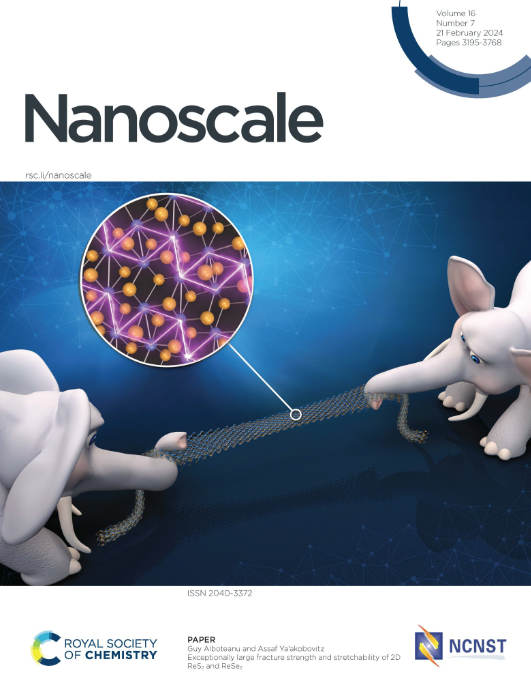通过异位偶氮苯光开关动态调节双(1,3-丙二醇)基通道的离子传输
IF 5.8
3区 材料科学
Q1 CHEMISTRY, MULTIDISCIPLINARY
引用次数: 0
摘要
离子在细胞膜上的运输对生物功能至关重要,而且经常受到光、配体和电压等外部触发因素的控制。合成离子传输系统,尤其是那些具有门控机制的系统,引起了人们的极大兴趣。在这项研究中,我们利用集成在异构位点的光致伸缩偶氮苯,设计了自组装桶状玫瑰花形离子通道。形态学研究证实,反式离子通道的自组装比顺式离子通道更有效。顺式的自组装受限可归因于顺式偶氮苯分子的非平面结构抑制了有利的π-π堆叠相互作用。离子传输研究表明,反式形成的离子通道以阴离子反向传输为主要传输机制。相比之下,顺式的效率较低。基于这些观察结果,我们采用两组分别波长为 365 纳米和 450 纳米的电磁辐射实现了动态门控离子传输。分子动力学模拟研究表明,与顺式单体形成的通道相比,反式单体组装形成的通道具有更高的稳定性。此外,研究还发现反式通道能有效识别和传输氯化物。本文章由计算机程序翻译,如有差异,请以英文原文为准。
Dynamic regulation of ion transport through a bis(1,3-propanediol)-based channel via allosteric azobenzene photoswitching
The transportation of ions across cell membranes is vital in biological functions and is frequently controlled by external triggers like light, ligands, and voltage. Synthetic ion transport systems, particularly those featuring gating mechanisms, have attracted considerable interest. In this research, we engineered self-assembled barrel rosette ion channels using a photoresponsive azobenzene integrated at an allosteric site. Morphological studies verified more effective self-assembly of the trans form in contrast to the cis form. The restricted self-assembly of the cis form can be ascribed to the nonplanar structure of cis azobenzene moieties, which inhibits favorable π-π stacking interactions. The ion transport studies demonstrated the formation of ion channels by the trans form with anion antiport as the primary transport mechanism. In contrast, the cis form exhibited lower efficiency. Based on these observations, dynamically gated ion transport was achieved by employing two sets of electromagnetic radiations at 365 nm and 450 nm, respectively. Molecular dynamics simulation studies demonstrated that the channel formed by assembling trans monomers exhibited greater stability when compared to the channel formed by cis monomers. Additionally, the trans channel was found to recognize and transport chloride effectively.
求助全文
通过发布文献求助,成功后即可免费获取论文全文。
去求助
来源期刊

Nanoscale
CHEMISTRY, MULTIDISCIPLINARY-NANOSCIENCE & NANOTECHNOLOGY
CiteScore
12.10
自引率
3.00%
发文量
1628
审稿时长
1.6 months
期刊介绍:
Nanoscale is a high-impact international journal, publishing high-quality research across nanoscience and nanotechnology. Nanoscale publishes a full mix of research articles on experimental and theoretical work, including reviews, communications, and full papers.Highly interdisciplinary, this journal appeals to scientists, researchers and professionals interested in nanoscience and nanotechnology, quantum materials and quantum technology, including the areas of physics, chemistry, biology, medicine, materials, energy/environment, information technology, detection science, healthcare and drug discovery, and electronics.
 求助内容:
求助内容: 应助结果提醒方式:
应助结果提醒方式:


